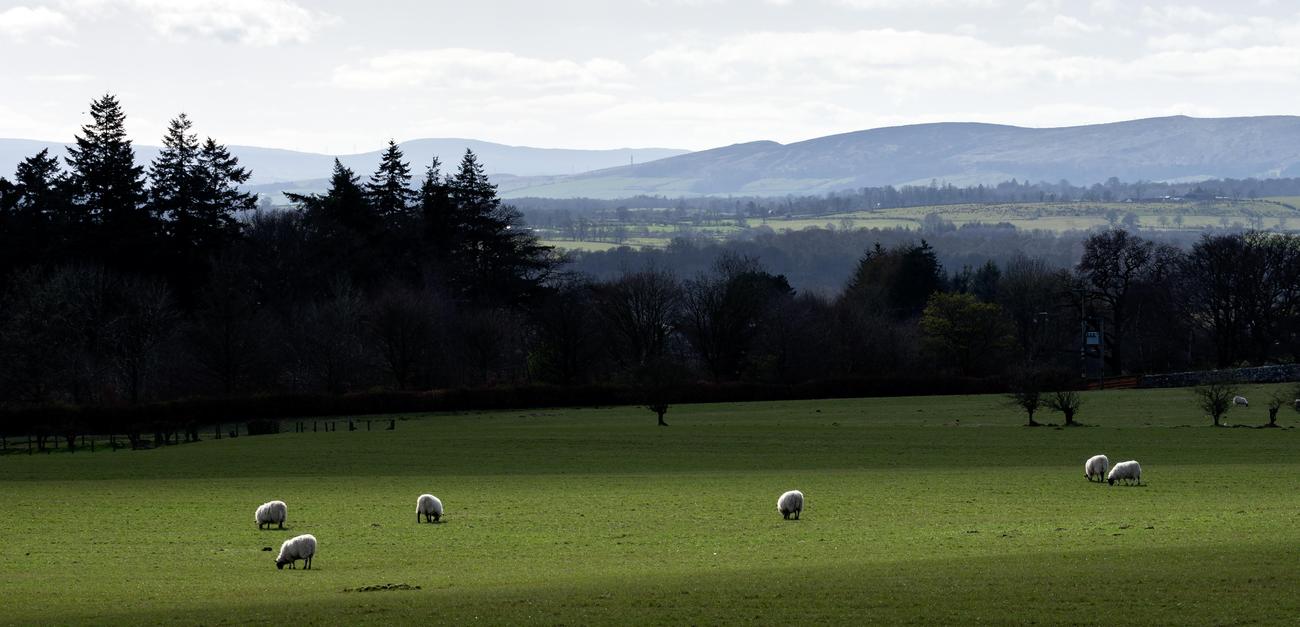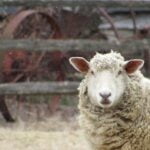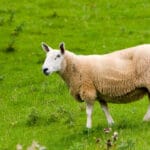Fascinating Facts About Sheep: Exploring the Physiology, Behavior, and Husbandry
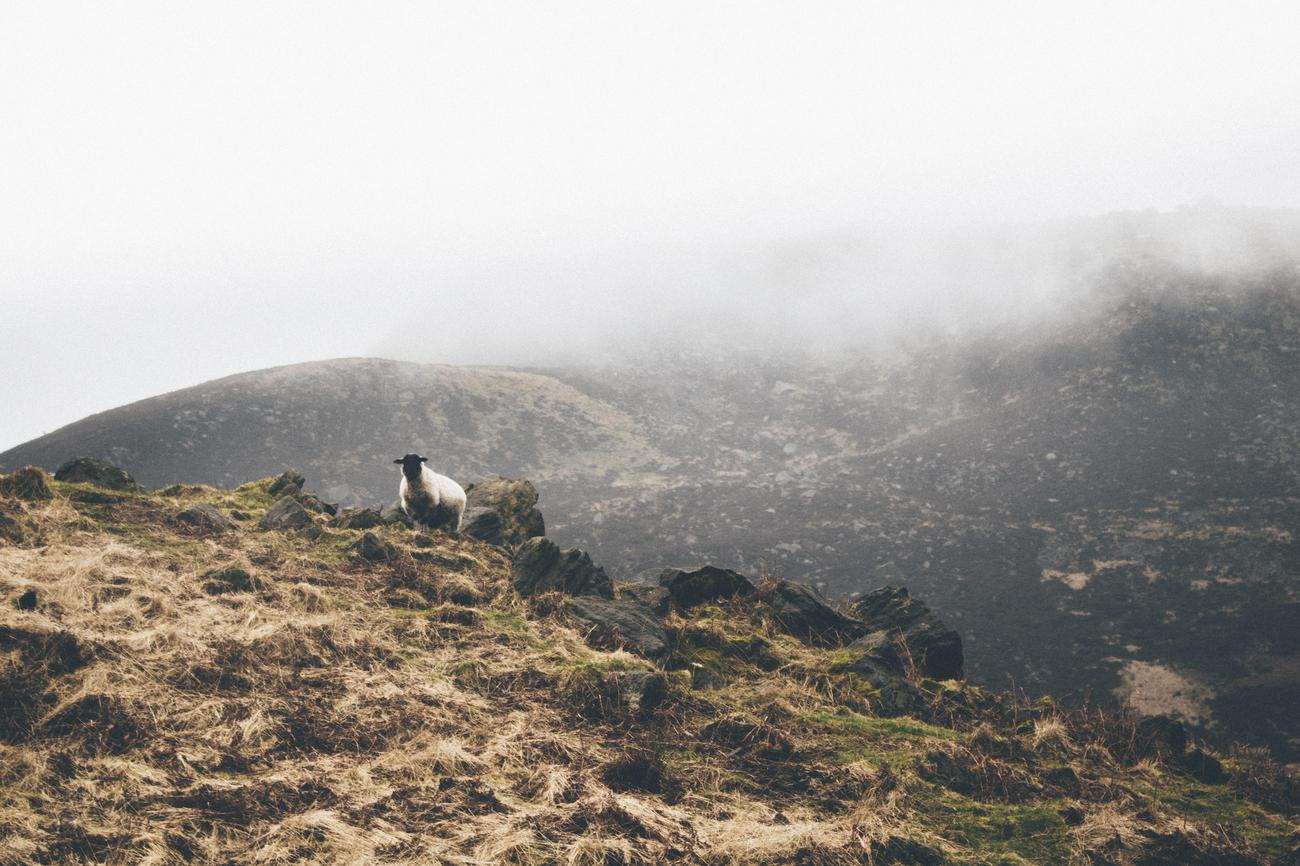
When it comes to understanding the world of sheep, there is a multitude of fascinating facts waiting to be explored. From their rich historical significance to their unique physiological characteristics, sheep have captivated the human imagination for centuries. In this article, we embark on a journey to uncover the lesser-known truths about these remarkable creatures, delving into their physiology, behavior, and the intricate practices surrounding their husbandry. Prepare to be amazed as we unravel the secrets behind the woolly wonders that have shaped our past and continue to influence our present.
Fascinating Facts About Sheep: Exploring the Physiology, Behavior, and Husbandry
Sheep, those fluffy and sociable animals that roam our pastures and fill our children’s storybooks, are truly remarkable creatures. From their distinctive rectangular pupils to their incredible problem-solving abilities, sheep possess a myriad of captivating features that make them an integral part of our agricultural landscape. Let’s dive into the world of sheep and uncover some intriguing facts about these woolly wonders!
- Sheep Have an Impressive Memory and Recognition Skills: It’s no exaggeration to say that sheep have excellent memories. These intelligent animals can recognize the faces of humans and even remember those who have provided them with care and attention. So, next time you visit that friendly sheep in the field, rest assured they won’t forget your face!
“Contrary to the popular belief that sheep are forgetful creatures, their remarkable memory allows them to recognize familiar faces, including the caring humans who tend to their needs.”
- Sheep Communicate Through Body Language: The position of a sheep’s ears can reveal a great deal about their emotions. If their ears are relaxed and pointing forward, it indicates contentment. On the other hand, ears held flatback suggest aggression or fear. These visual cues provide valuable insights into a sheep’s state of mind.
“Without uttering a single word, sheep convey their emotions through a subtle but expressive language, using the position of their ears as a secret code.”
- Sheep Are Intelligent Problem-Solvers: Don’t let their peaceful grazing fool you; sheep are astoundingly intelligent animals. They possess problem-solving skills that allow them to overcome obstacles and find innovative solutions. For instance, if a sheep spots a tasty treat just out of reach, their resourceful nature kicks in, and they will use various strategies to access their desired reward.
“Intelligence knows no bounds, and sheep are a testament to that. Their ability to think critically and solve problems demonstrates their adaptability and resourcefulness.”
- Domestic Sheep and Wild Sheep: While domestic sheep are known for their thick wooly coats and peaceful demeanor, their wild counterparts display some distinct differences. Wild sheep do not possess wool and always have horns, which they use for defense against predators. These majestic creatures are significantly larger than domestic sheep, reflecting their need for resilience in the wild.
“Nature has shaped two versions of the same magnificent animal. Domestic sheep wear a coat of fine wool, while wild sheep proudly bear their horns and face the challenges of their untamed habitats.”
- Sheep – A Global Presence: With over 1 billion sheep across the world, it’s safe to say that these unassuming animals have a significant global presence. More than 200 breeds of sheep exist, each with their own unique characteristics and adaptations. From the Scottish Blackface to the Merino, these breeds contribute to the diverse tapestry of sheep farming worldwide.
“From the sweeping green pastures of New Zealand to the rugged hills of Wales, a billion sheep dot the globe, representing a stunning array of breeds and serving various agricultural purposes.”
- Sheep – Dedicated Herbivores: Grazing and chewing the day away, sheep are dedicated herbivores. They consume an impressive amount of food, devouring 2-4 pounds of grass and plants daily. This herbaceous diet provides them with the necessary nutrients to thrive and maintain their healthy wooly coats.
“With an insatiable appetite for greens, sheep are Mother Nature’s ultimate gardeners, tirelessly working to maintain the balance of the land.”
- Sheep Milk – A Nutritional Powerhouse: Apart from their wool and meat, sheep provide another valuable resource – milk. Sheep milk is exceptionally rich in protein and fat, making it a nutritious choice for those seeking alternative dairy options. This creamy and flavorful milk finds its way into a wide variety of products, including cheese, yogurt, and even ice cream!
“Beyond their exquisite wool, sheep share their nutritious bounty through their milk, fostering a myriad of delectable treats that leave our taste buds longing for more.”
In conclusion, sheep captivate us with their fascinating physiology, remarkable intelligence, and unmistakable presence in our world. From their impressive memory to their expressive body language, every fiber of their being is a testament to the wonders of nature. So, the next time you encounter a flock of sheep, take a moment to appreciate the extraordinary creatures they are, filled with stories and secrets waiting to be unveiled.
“Within the heart of every sheep lies a world of marvels, a testament to the depth and diversity of our natural world.”
Facts About Sheep
Did you know that sheep are some of the most fascinating creatures on the planet? They have some unique characteristics that make them truly remarkable. Have you ever wondered how long do sheep live? Find out more about the lifespan of these amazing animals here.
Another interesting aspect of sheep is their diet. Have you ever asked yourself, “What do sheep eat?” You might be surprised to learn about the diverse range of foods that these woolly herbivores consume. Discover all about their dietary habits here.
One common question that often confuses people is the difference between a lamb and a sheep. If you’ve ever found yourself pondering over this, we’ve got the answers for you! Learn the distinction between a lamb and a sheep here.
While we’re on the topic of differences, have you ever been curious about the difference between a sheep and a lamb? Well, wonder no more! Click here to unravel the mystery and gain a deeper understanding of these adorable woolly creatures.
As you delve into the fascinating facts about sheep, you’ll be amazed by their resilience, adaptability, and unique traits. So, take a moment to explore these captivating links and expand your knowledge about these incredible animals.
Historical Facts About Sheep
Throughout history, sheep have played a significant role in human civilization. From their early domestication to their impact on global trade, these fascinating creatures have left an indelible mark. Let’s explore some captivating historical facts about sheep that highlight their importance and contribution to our world.
- The First Domesticated Animals: Sheep hold the prestigious title of being the first animals domesticated by humans. Approximately 10,000 years ago, in Central Asia, our ancestors recognized the benefits of these gentle creatures and began rearing them for various purposes. This groundbreaking event marked the beginning of our intricate relationship with sheep.
“Sheep were the first animals to become companions to humans, forever changing the course of history.”
- The Advent of Spinning Wool: While sheep had been domesticated for thousands of years, it wasn’t until around 3,500 BC that people discovered how to spin yarn from their wool. This revolutionary technique unlocked the potential of sheep’s fleece as a source of warmth, clothing, and trade. It transformed the way humans lived and interacted with their environment.
“The art of spinning wool transformed the world of textiles, opening up new possibilities for human ingenuity and creativity.”
- Queen Isabella’s Contribution: In the 1400s, Queen Isabella of Spain made a pivotal contribution to sheep’s historical legacy. She used funds obtained from the flourishing Spanish sheep industry to finance Christopher Columbus’ voyage to the New World. As a result, sheep were introduced to North America for the first time. This significant event not only expanded the distribution of sheep but also impacted the economic and agricultural landscape of the Americas.
“Queen Isabella’s support of Columbus propelled sheep onto the world stage, forever intertwining their presence with global exploration.”
- The Wool Supremacy Battle: In the 1600s, England sought to gain supremacy in wool clothing production by imposing a ban on sheep imports to America. However, colonists were determined to establish their own wool industry and defied the ban by smuggling sheep to the colonies. By 1664, there were already around 10,000 sheep in America, setting the stage for the growth of an industry that would shape the young nation’s economy.
“The sheep smuggling saga painted a vivid picture of colonists’ resilience and their determination to build their own wool empire.”
These are just a few examples of the rich historical tapestry surrounding sheep. Each fact offers a glimpse into their enduring significance and the profound impact they have had on humanity. From their initial domestication to their relevance in global trade, these animals have played a vital role in shaping our world.
Stay tuned to explore more mesmerizing facts about sheep, delving into their intriguing physiology, behavior, and husbandry practices. The wonders of sheep are boundless and deserve our attention as we unravel the mysteries of these remarkable creatures.
Characteristics
Sheep are fascinating creatures with a unique set of characteristics that make them truly remarkable. From their physical attributes to their behavior and role in agriculture, sheep possess a wide range of intriguing qualities. Let’s explore some of the most captivating characteristics of these woolly animals.
1. Four Stomach Compartments: One of the defining features of sheep is their impressive digestive system. Like other ruminants, sheep have four stomach compartments: the rumen, reticulum, omasum, and abomasum. This complex system allows them to efficiently extract nutrients from fibrous plant material, such as grass and leaves. Their ability to digest cellulose, a tough plant fiber, is a crucial adaptation that enables sheep to thrive in a herbivorous diet.
“With their four stomach compartments, sheep have a digestive system designed to extract maximum nutrition from plants.”
2. Valuable Resources: Sheep are valuable not only for their cute appearance but also for the resources they provide. They produce wool, milk, and meat, making them highly versatile and important to human society. Wool, in particular, has been cherished for centuries and used for a multitude of purposes, from clothing to insulation.
“Sheep are multi-purpose animals, offering us wool, milk, and meat, proving their significance in our lives.”
3. Social Creatures: Sheep are social animals that display a surprising level of intelligence and social bonding. They have the ability to recognize faces, including those of the individuals who care for them. This recognition contributes to their cooperative nature and enables them to form strong social connections with other flock members.
“Did you know that sheep can recognize familiar faces, just like humans? This remarkable ability reflects their social nature and deepens their bonds within the flock.”
4. Horns and Scent Glands: Some sheep species have large and curling horns, which add to their distinctive appearance. These impressive horns serve both as a visual display and as a means of self-defense against predators. Additionally, sheep possess scent glands in their face and hind feet. These glands play a crucial role in communication, as they release scent signals that convey information to other sheep.
“Sheep have evolved with striking horns that serve as both a defense mechanism and a form of visual communication. Their scent glands also play a vital role in conveying information to their fellow flock members.”
5. No Beards or Long Tails: Unlike their close relatives, goats, sheep lack the characteristic beards. This distinction is one of the factors that helps differentiate between the two species. Additionally, sheep have short tails, which are less prominent compared to the long tails of some other animals.
“While goats sport impressive beards, sheep possess a different charm with their clean-shaven faces. Moreover, their short tails add to their distinctive appearance.”
6. Evolutionary Relationships: Sheep are part of the Bovidae family, which includes other cloven-hoofed animals like antelopes, cattle, muskoxen, and goats. These animals share common ancestors and exhibit various similarities in their physical and behavioral characteristics.
“Sheep have interesting evolutionary connections. They belong to the Bovidae family, which also includes antelopes, cattle, muskoxen, and goats.”
7. Vulnerability to Predators: Sheep are unfortunately vulnerable to predators such as coyotes and wild dogs. Their peaceful demeanor and lack of strong defensive capabilities make them an easy target for these carnivorous animals. This vulnerability has led to the need for effective measures to protect sheep flocks from potential harm.
“Despite their gentle nature, sheep face constant threats from predators like coyotes and wild dogs. This vulnerability emphasizes the importance of safeguarding these peaceful animals.”
8. An Ingenious Feeding Technique: Sheep have a unique feeding adaptation that sets them apart from other herbivores. They possess a split in their upper lip, which allows them to selectively pick preferred leaves off plants. This ingenious technique enables them to efficiently forage and select the most nutritious plant parts.
“Have you ever wondered why sheep have a split in their upper lip? This distinctive adaptation helps them select the tastiest and most nutritious leaves while grazing.”
9. Changes from Wild Ancestors: Domesticated sheep, as we know them today, have undergone significant changes from their wild ancestors. Domestic sheep possess wool and exhibit a peaceful demeanor, while wild sheep do not have wool and always have horns for defense. These adaptations are a result of selective breeding and human intervention throughout history.
“Domestic sheep have come a long way from their wild ancestors. We have shaped their characteristics, resulting in the woolly and peaceful creatures we now encounter.”
Sheep are truly fascinating creatures with a plethora of intriguing characteristics that capture our imagination. From their remarkable digestive system and resourcefulness to their social bonds and unique physical attributes, sheep never cease to amaze us. By appreciating and understanding these characteristics, we gain a deeper appreciation for the wonders of nature that sheep represent.
“Sheep captivate us with their physiology, intelligence, and presence in our world. They deserve appreciation for the remarkable characteristics they embody.”
Top 20 Fascinating Facts About Sheep
[youtube v=”ohiGK4yw-U4″]
Sheep are captivating creatures with a rich history and unique characteristics that make them truly remarkable. In this article, we explore the most intriguing facts about sheep, shedding light on their intelligence, role in human civilization, and the wonders of nature they represent.
1. Sheep: An Overwhelming Presence in the World
There are over 1 billion sheep worldwide, belonging to more than 200 different breeds. These woolly mammals have been an integral part of human lives for thousands of years, captivating us with their charm and resilience.
“Sheep captivate us with their physiology, intelligence, and presence in our world, and deserve appreciation for the wonders of nature they represent.”
2. The First Domesticated Animal: A Legacy of Sheep
Sheep were the first animals to be domesticated by humans around 10,000 years ago in Central Asia. This historic event marked the beginning of agriculture and pastoralism, forever shaping human civilization.
3. Wool: A Revolutionary Discovery
The use of sheep’s fleece as a source of warmth and clothing revolutionized human existence around 3,500 BC. Spinning wool became a game-changer, enabling the production of versatile textiles and facilitating trade.
4. Sheep in the New World
Sheep made their way to the Americas through Christopher Columbus’ voyage, sponsored by Queen Isabella of Spain. Funds from the Spanish sheep industry were used to finance the expedition, introducing sheep to North America.
5. The Wool Smuggling Tale
In the 1600s, England imposed a ban on sheep imports to America in an attempt to dominate the wool clothing production industry. However, resilient colonists defied the ban by smuggling sheep, ultimately establishing their own thriving wool industry.
6. The Versatile Digestive System
Sheep possess a unique digestive system with four stomach compartments, allowing them to efficiently extract nutrients from plants. This remarkable adaptation enables them to thrive on diets mainly consisting of grass and plants.
7. Valuable Resources from Sheep
Sheep are valuable not only for their wool but also for other resources they provide. Sheep milk, rich in protein and fat, is used to produce various dairy products like cheese and yogurt. Additionally, their meat is a significant part of many traditional cuisines.
8. Social and Intelligent Creatures
Sheep are social animals that can recognize faces and form strong social connections with other members of their flock. They possess exceptional memory and recognition skills, allowing them to identify familiar faces, including those who care for them.
9. Communication through Body Language
Sheep communicate through body language, using the position of their ears to convey their emotions. This nonverbal communication helps them express different states, such as alertness, curiosity, or distress.
10. Domestic vs. Wild Sheep
Domestic sheep and wild sheep have distinct differences. Domestic sheep have wool and exhibit a peaceful demeanor, while wild sheep do not have wool and always have horns for defense.
11. A Sheep’s Sight
Can you imagine having a field of vision of around 300 degrees? That’s what sheep have! The positioning of their eyes on the sides of their head allows them to see behind themselves without having to turn their head.
12. A Flock of Twins
When giving birth, most sheep give birth to twins, showcasing their reproductive efficiency. This abundance of twins ensures the survival and growth of their flock.
13. Attraction Beyond Gender
Studies have shown that around 8% of all male sheep are attracted to the same gender. This interesting fact highlights the diverse nature of sheep behavior and sexual preferences.
14. Defense and Visual Communication
Sheep species with large, curling horns use them as a defense mechanism and a form of visual communication. These impressive horns serve as a deterrent to potential predators and help establish dominance within the flock.
15. The Sheep’s Impact on Our World
Sheep have played a significant role in shaping human civilization, from their initial domestication to their contribution to global trade. They continue to be essential in the agricultural industry and have left an indelible mark on our cultural heritage.
“Sheep have had a significant impact on human civilization, from their initial domestication to their role in global trade.”
In conclusion, sheep are not just mere animals but fascinating creatures that have accompanied humans throughout history. Their wool, milk, and meat have provided resources and sustenance, while their intelligence and social nature have captivated our hearts. Let us appreciate these remarkable animals for the wonders of nature they represent.
“Sheep captivate us with their physiology, intelligence, and presence in our world, and deserve appreciation for the wonders of nature they represent.”
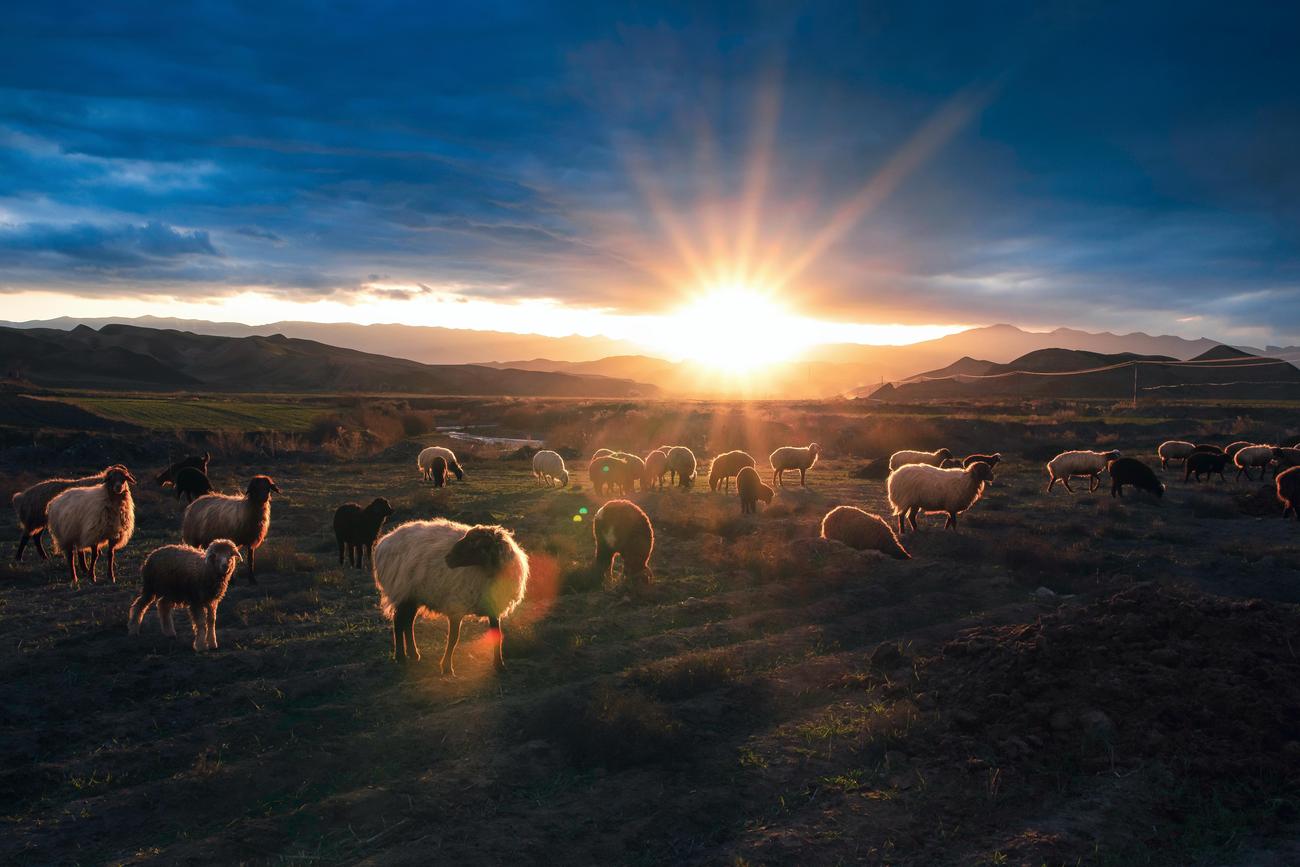
FAQ
Question 1: What are some historical facts about sheep?
Answer 1: Sheep were the first animals domesticated by humans 10,000 years ago in Central Asia. Queen Isabella of Spain used money obtained from the sheep industry in the 1400s to fund the voyage of Columbus, who brought sheep to North America for the first time. In the 1600s, England declared it illegal to import sheep to America to gain supremacy in wool clothing production, but colonists smuggled sheep to America, and by 1664, there were about 10,000 sheep in the American colonies.
Question 2: What are the main products obtained from sheep?
Answer 2: Sheep are raised for agricultural purposes because they are sources of many products that can be useful to humans. These products include meat, wool, and milk. Domesticated sheep are raised for their fleece (wool), milk, and meat.
Question 3: Are there different breeds of sheep?
Answer 3: Yes, there are almost 1,000 breeds of sheep. Each breed has its own unique characteristics and traits that make them suitable for specific purposes such as wool production, meat production, or milk production.
Question 4: Can sheep recognize faces?
Answer 4: Yes, sheep have the ability to recognize faces. They have very good memories and can recognize the people who take care of them.
Question 5: What are some unique characteristics of sheep?
Answer 5: Sheep have rectangular pupils and display emotions by the position of their ears. They are extremely intelligent animals capable of problem-solving and vocalizing different emotions. Sheep have a split in their upper lip that helps them pick preferred leaves off plants. They are social animals and enjoy being in large groups for safety. Sheep also have scent glands in their face and hind feet and lack the beards of goats.
